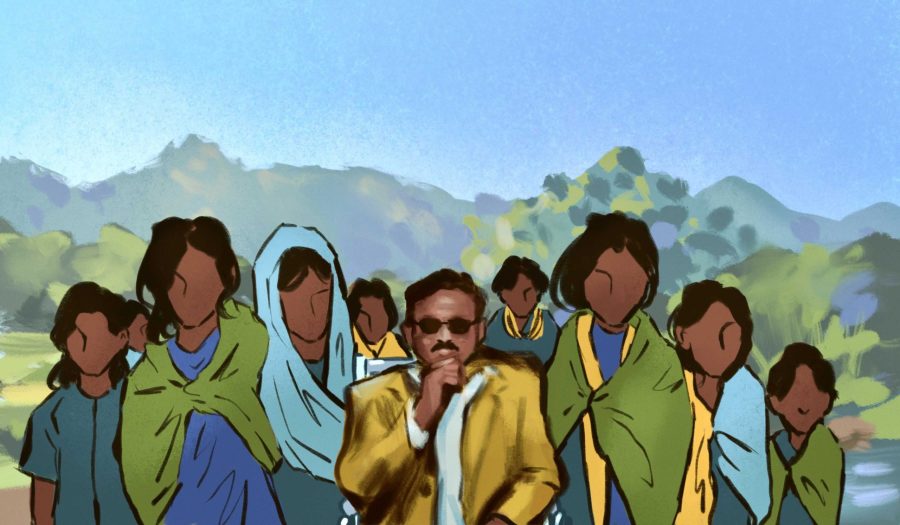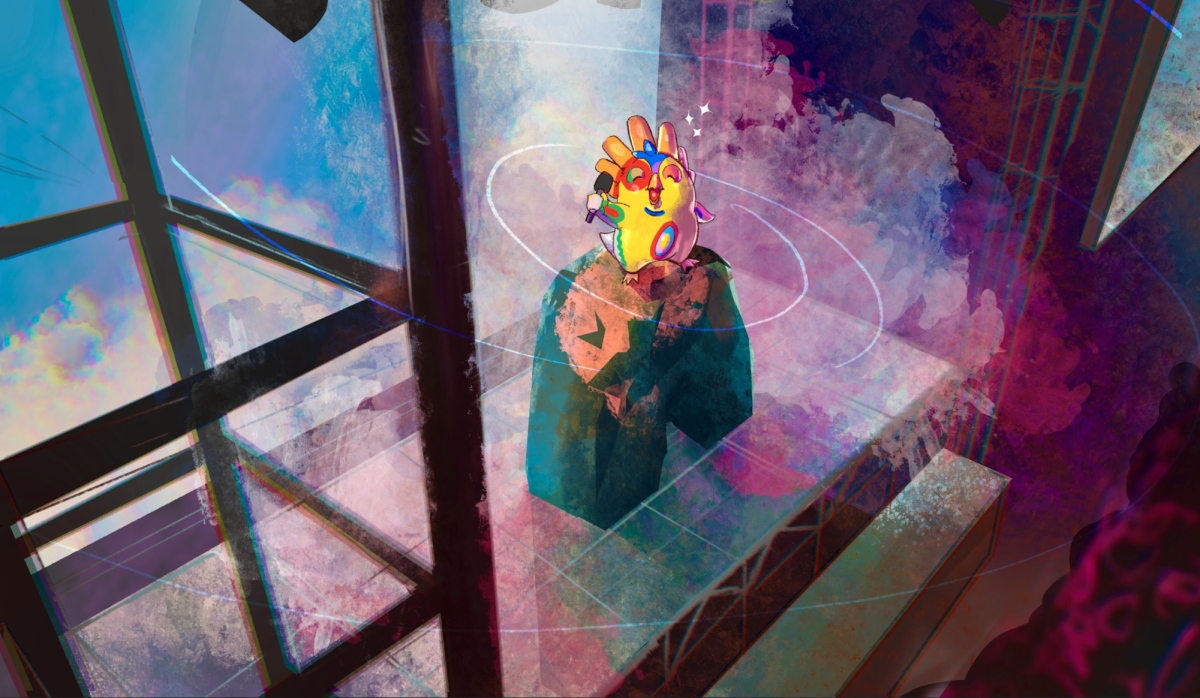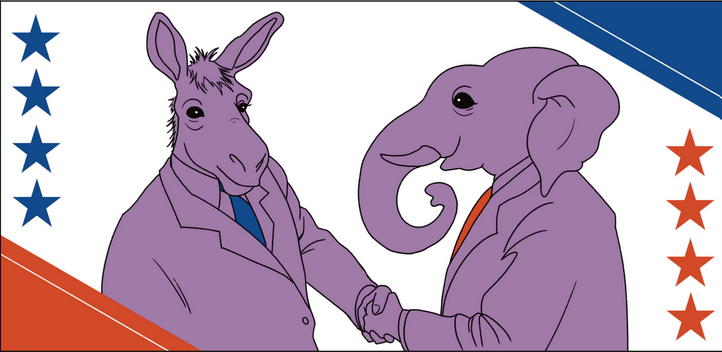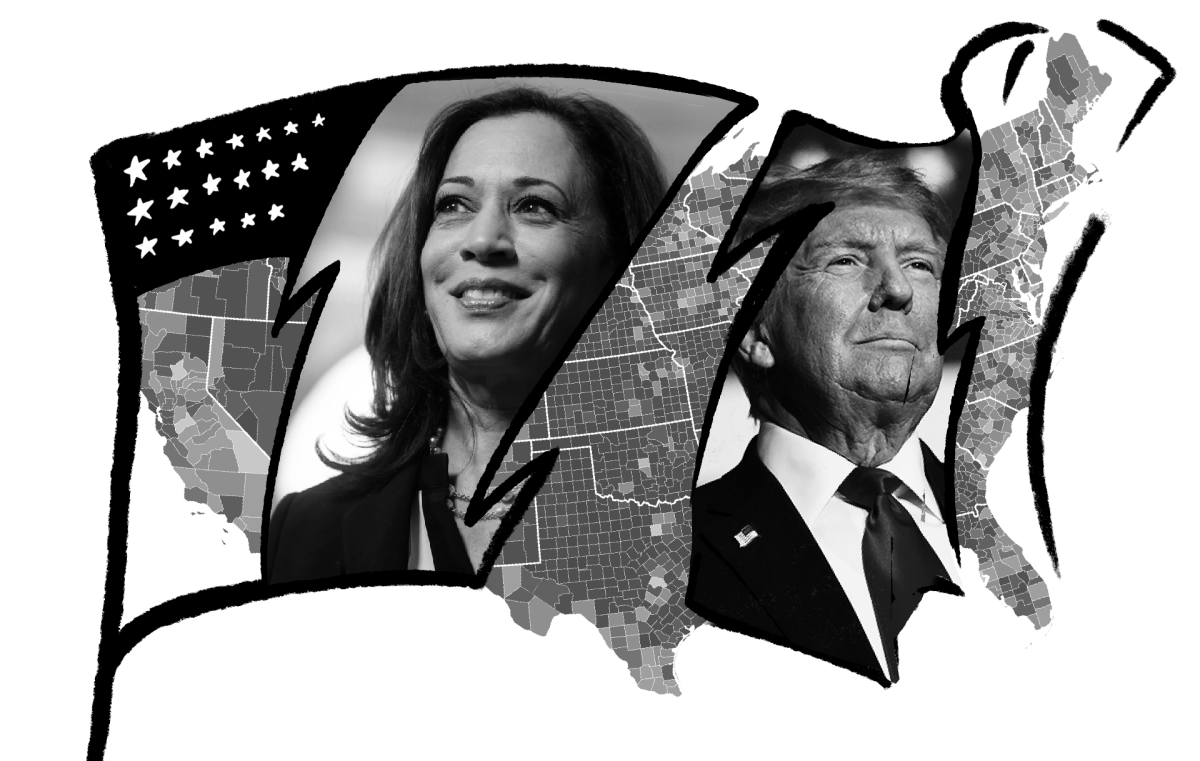My life is like that of a tree chopped of its branches, with its roots chopped off.
My heart throbs with heavy thuds,
a thousand Himalayas dropping into the Pacific Ocean from the high skies.
Excerpt from “I Think of Your Evergreen Smile”
By G.N. Saibaba.
When we think of home, why do we often attach ourselves to the land that nurtured us? We imagine its landscape, the people, and the communities born out of them. Many of us find peace reminiscing about our upbringing. We think of our past and the generations that preceded us. A sense of nostalgia rarely exists in the absence of a place.
When this home of ours is threatened, we are quite reasonably aggravated. When those in power attempt to dispossess us from our land, we innately feel the need to fight back. For many cultures, their existence is inextricably tied to the land, so people will do everything in their power to keep it.
In the remote Indian villages of the Niyamgiri hill range, the region’s natural environment and the livelihoods of the native Adivasi people are under constant risk of governmental and industrial incursion. The violence, displacement, persecution, and imprisonment of these Indigenous minorities for protecting their bauxite-rich land underscores the injustice the Indian government has been perpetrating in the name of economic profit. Their total disregard for the Adivasis is deplorable and must be met with strong opposition worldwide.
For generations, the Dongria Kondh tribal community –– made up of over 8,000 people –– has maintained a symbiotic relationship with Niyamgiri, practicing sustainable agriculture and holding the trees and hills sacred. Owning land on the mountain became intrinsically linked to tribal identity and cutting down trees is often considered taboo. As the Dongria ensure that their actions maintain the natural balance, the hill’s bauxite helps absorb monsoon rainwater, which feeds into the nearby streams for consumption.
Industry interests to mine bauxite and develop aluminum drove the nationalist and neoliberal Indian government to attempt to forcibly displace these people. In total disregard of the National Forest Policy of 1988 and the Other Traditional Forest Dwellers Act of 2006 (otherwise known as the FRA Forest Rights Act), the government has failed to properly create conservation reserves and recognize traditional land claims. Without this legal recognition, the Adivasi’s homeland is at further risk of exploitation and destruction, not to mention the displacement of thousands, depending on the village.
The government’s slow and reluctant response in helping the Adivasi was inversely mirrored by its enthusiasm to grant bauxite mining permits to Vedanta LTD and Odisha Mining Corporation in the late 2000s. The Indian government’s choice to prioritize economic over human interests illustrates how those in power are fueled by greed and are careless to the needs of their own people. The grassroots Adivasi movement, in turn, pushed back by organizing a multitude of protests. Sometimes referred to as the ‘environmentalism of the poor,’ the Dongria and other neighboring communities banded together to hold large demonstrations in the state’s capital against government mining interests. Some carried out civil disobedience, creating human walls and barricades of fallen trees to prevent entry into the remote Niyamgiri range.
“Let our blood flow like a river, but we won’t allow mining,” local Adivasi activist Lado Sikaka said in an interview with The Economic Times.
As a result of their continued pressure, the Supreme Court ruled on the case in 2013 and gave tribal groups power to decide whether they wanted mining in their territory. In the subsequent year, the environment ministry codified the Adivasi’s decision against bauxite extraction by banning mining in Niyamgiri. A second attempt by OMC to mine in 2016 was similarly shot down in court. However positive a result, these actions are merely exceptions to an enduring legacy of disrespect and dispossession.
Although Niyamgiri is protected from mining for the foreseeable future, many other locations along the northeastern belt of India, home to many Indigenous groups, must contend with the coercion and animosity of government and industry influences. The FRA may, on paper, require the Indian government to process and recognize land claims, but it has only done so for 3 percent of tribal lands. The lack of recognition allows India to continue with mining development programs that have disproportionately displaced Indigenous peoples. With each new project comes the displacement of tens of thousands, not to mention the degradation of the natural environment that they have called home for generations.
Because Indigenous lands are not protected, nor do laws prohibit other industrial activities, the Indian government has, through the last decade, issued permits for various operations. One particular alumina refinery site at Lanjigarh has decimated the livelihoods of the nearby communities and caused red mud pollution runoff in Niyamgiri. Those living directly near the refinery have found that crops will no longer grow properly and that the land has become too muddy for new construction. The red mud also caused pollution of the groundwater, increasing sodium content and making it undrinkable for the villagers who live as far as the Dongria or Kutia Kondhs. While this case was prominent in international media, these problems are occurring in countless other areas throughout the region and other parts of India.
Adivasi opposition was swift in Lanjigarh. In early March 2019, fervent protestors stood in front of the refinery to demonstrate against corporate greed, land degradation, and the imprisonment of prominent activists. They were met with violence from security personnel, who killed one protester. The renewed uproar against the government was further exacerbated by the Supreme Court’s order to remove any Adivasis from their land if their FRA application was rejected. According to some activists, the rejection of more than half of the applications often did not have justifiable reasons for their decisions. By influencing the bureaucratic process, politicians artificially skewed the results in their favor in hopes that the lack of recognition will allow for more business, and thereby, profits.
Far beyond just a question of climate justice and respect for indigeneity, the decision to persecute and imprison activists has ignited debates on freedom of expression, assembly, and dissent. Those living along the northeastern belt have increasingly been called Maoist insurgents –– a group of political revolutionaries fighting for communism in India –– by the government. With the region becoming more militarized, villagers often are arbitrarily stopped by paramilitary troops and interrogated. Those protesting against industrialization find themselves the target of government persecution and wrongful imprisonment. It is absurd that the country which prides itself with being “the largest democracy in the world” fails to uphold their citizens’ basic rights.
Human rights activists, like Delhi University Professor G.N. Saibaba, have become the government’s scapegoats and often are falsely charged with working with Maoist insurgents. For the act of supporting the Adivasi movement, Saibaba was sentenced to life in prison in 2013. Suffering from a multitude of pre-existing conditions, Saibaba’s health has decreased rapidly due to the lack of proper medical treatment in prison.
This is the consequence of dissent. The true intentions of the Indian government should be readily apparent: speaking up against the government’s interests and rallying supporters will lead you into a jail cell. Saibaba’s case is disheartening but it should not overshadow the reality that many other activists are also targeted by the government in a senseless attempt to quiet the cacophony of indignation. It is a pathetic tactic to scare and suppress, one which has failed incredibly. Since Saibaba’s imprisonment, the movement has grown even stronger: livid at the government’s policies and detention of activists, protestors continue to fight back. Saibaba and others lit a candle, galvanizing hundreds more to action. The flame is passed along and has only grown. It has even managed to travel across oceans and continents.
It has come to us. While the Adivasi are far in distance, they are close to our hearts. One need only look at the displacement of the Kumeyaay people in what is now called San Diego County to recognize that injustice here is equally as prominent elsewhere. When hearing about the Adivasi and Saibaba’s story, a group of UC San Diego students –– including myself –– organized as part of their advocacy seminar to create the Hand in Hand Collective. We’ve already hosted a seminar decrying political repression and will soon publish a book of poems, artwork, and testimonials on behalf of G.N. Saibaba. However, this issue requires more attention; while our seminar will end with the quarter, the movement and Saibaba’s imprisonment will continue.
The narrative of this injustice is far too common. Land is taken from Indigenous populations to serve the interests of a neoliberal government. The region’s natural habitat is unsustainably exploited and subsequently destroyed. The former residents are dispossessed and often persecuted if they protest. However often this may occur, each is still an egregious affront to human rights and the environment. Collective action is the best way forward. It is necessary for us to speak up and continually support these people, for the Adivasi, and the countless advocates –– like G.N. Saibaba –– who have risked their lives in the fight for a better, more just future.
Art by Angela Liang for the UC San Diego Guardian.















vasantha • Jun 4, 2021 at 5:30 pm
Saibaba was sentenced to life in prison in the year 2017 March 7.
He was abducted (arrested) on May 9th 2014.
Saibaba’s house in the Delhi University campus in Delhi was raided in September 12th 2013.